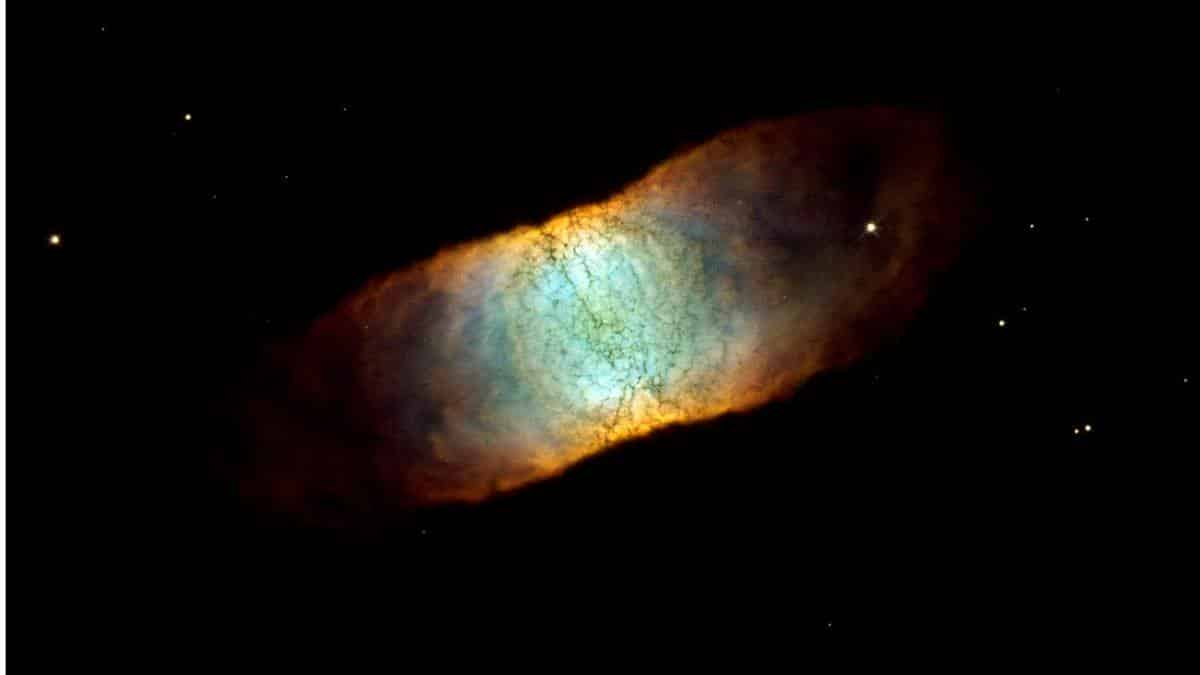IC 4406 THE RETINA NEBULA: DIEING STAR

This Image’s Background
In this month’s Hubble Heritage image, the fading star IC 4406, dubbed the “Retina Nebula,” is shown.
IC 4406, like many other so-called planetary nebulae, has a high degree of symmetry; the Hubble image’s left and right sides are nearly mirror images of each other. We could watch the gas and dust form a large donut of material streaming outward from IC 4406 if we could fly around it in a starship. From Earth, we see a side view of the donut. The delicate tendrils of dust that have been compared to the retina of the eye can be seen in this side view. The doughnut is seen from the top in other planetary nebulae, such as the Ring Nebula (NGC 6720).
The powerful radiation emitted by the dying star’s remnant is contained by the donut of material. The light from the central star ionizes the gas inside the doughnut, which glows. The light from oxygen atoms is depicted in this image as blue, whereas hydrogen is depicted as green and nitrogen is depicted as red. The final image’s colour spectrum depicts the nebula’s changes in the concentration of these three gases.
A bigger zone of neutral gas that does not emit visible light but may be seen by radio telescopes is not apparent in the Hubble image.
The uneven lattice of black lanes that crisscross the core of IC 4406 is one of the most intriguing characteristics of the nebula. The width of these lanes is around 160 astronomical units (1 astronomical unit is the distance between the Earth and Sun).
They’re just on the dividing line between the hot, burning gas that creates the visible light seen here and the neutral gas observed through radio telescopes. The lanes are seen in silhouette because their dust and gas density is a thousand times that of the rest of the nebula. The dust lanes resemble a very open mesh veil wrapped around the dazzling doughnut.
It is unknown what will happen to these thick clusters of material. Will they survive the nebula’s expansion and become dark residents of the interstellar vacuum, or will they simply fade away?
This image was created by combining data from Hubble’s Wide Field Planetary Camera 2 taken by Bob O’Dell (Vanderbilt University) and collaborators in June 2001 and The Hubble Heritage Team in January 2002. (STScI). Filters used to make this color photograph reveal the incandescent gases of oxygen, hydrogen, and nitrogen in this item.


